Kid Spaces: Ingredients of a Dream Playroom
http://decor-ideas.org 08/17/2013 19:10 Decor Ideas
I've recently been engaged to design a playroom addition to a home that lacks a place for the kids to just have fun. The home is in a northern climate, so playing outdoors for much of the year isn't possible. There is no basement and building one would cost too much.
So in thinking about the design of this playroom I turned to a constant inspiration, Frank Lloyd Wright. Specifically, the playroom that Wright designed for his children in their Oak Park home is just wonderful.
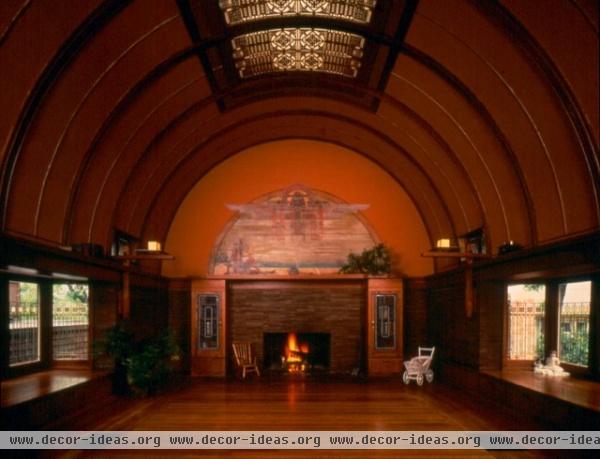
The playroom that Wright designed is large and accommodating while at the same time small and comfortable, with its vaulted ceiling, low-set window seats and Aladdin mural.
Since talking with Wright isn't possible (short of holding a seance), I talked to the wife and husband design team of Architecture is Fun.
Sharon and Peter Exley provided some nice insights into how to create a wonderful playroom, a place children will love and claim for their own. Certainly Sharon's advice to "go on this journey with your child" is a great way to start.
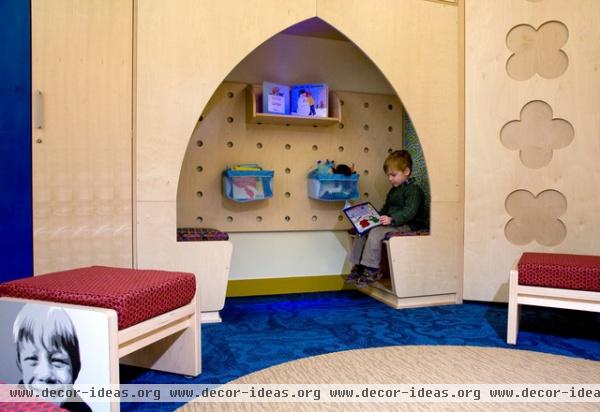
Create small spaces in a larger space. A big room with a tall ceiling may seem antithetical to a playroom but, as Wright's Oak Park playroom shows us, it's not. By using the vertical dimensions of a room to layer spaces, we can achieve small, intimate places that frame and cocoon activities. Sharon says she loves to explore the idea of cocooning an activity so that it becomes special and right-sized.
Use the floor to create activity zones. Let's face it, kids play on the floor. While it'd be easier to have one floor material in all one color and pattern, children really do use the floor for many different activities. Create different areas with colors and shapes. A circle shape, for example, can be a place where kids can invent their own game or gather for an activity.
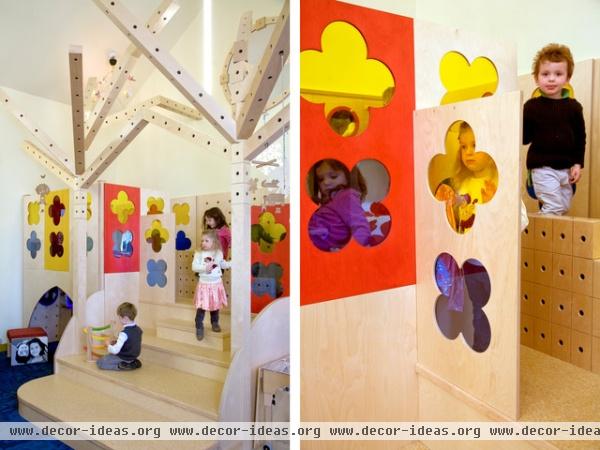
Storage can be playful. Children have stuff, and all of this stuff needs a place to be stored. So designers and homeowners should think about the clutter all of this stuff can cause. A nice trick is to create play items that double up as storage: objects that can be moved about and rearranged to create different places and backdrops to frame activities. Maybe your child will end up being an architect or builder after having grown up in a room that she can manipulate. While purchasing items from the likes of Ikea and the Container Store will keep costs down, go ahead and have a mill worker make a few special pieces that are designed the way the children want.
Ask the children what they really want. Go beyond painting the walls a pretty pink or beautiful blue. Go beyond the sports iconography and ballet bar. Talk with your children about what they'd like to do in the playroom and then design accordingly. Maybe just sit around in a circle on the floor with them and get to know what their dreams and desires are. It's certainly a good thing for any parent–child relationship.
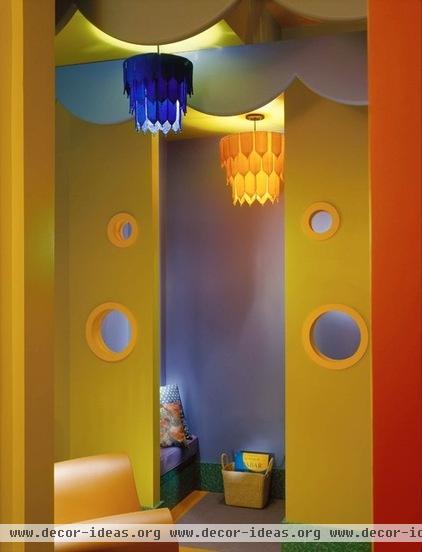
Use paint as a heroic material. Don't limit your choices to some neutral palette out of fear that you or someone close will dislike it. Be heroic and go for it. "It's just paint, after all," Sharon says. It can be easily removed if you don't like it. So challenge yourself, engage your children and find out what works.
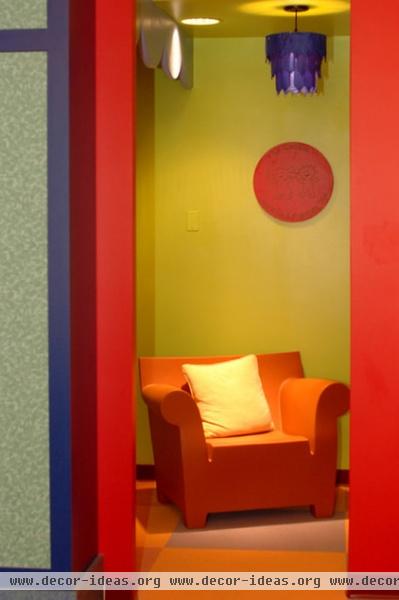
Tell a story within the room. Why not treat the ceiling as the sky with some cloud-like structures? Why not provide portals in different sizes and locations to peek from? Creating a room that's playful and fun is about creating the backdrop for a set of stories that unfold over time that are told by you, your children, your children's friends and more. What you want is a room that enables those stories to be told.
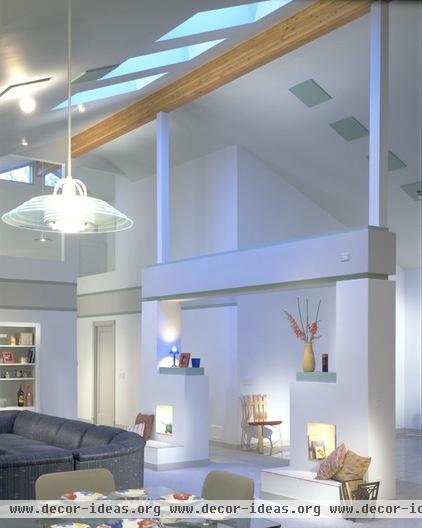
Scale up and down. Big spaces can overwhelm and small spaces are more challenging to adapt. So in a big room used by everyone in the family, use a range of scales that accommodates children of many sizes and the different activities they will undertake. A small reading bench adjacent to a full-size sofa encourages people of all ages to inhabit the same room.
Adjust the architecture if need be. If there are two skinny columns that occupy the center of the space, use them to make a portal and a place that's a part of, but separate from, the larger room. And use graphics, color, shelves, seats and light to bring the scale from up high to down low and then back again.
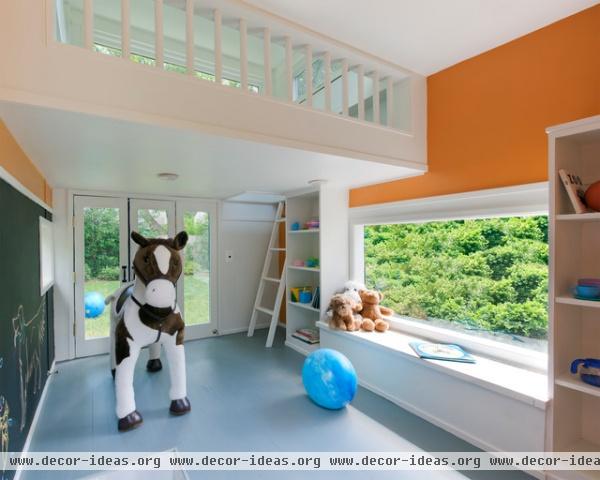
Go low. As in the playroom in Wright's Oak Park home, here a window seat is set low, and the window is used to frame the view of the adjacent treetops. So while being safe an secure inside, the feel of being in a treehouse is still with us.And the scale is reduced so that the child feels large and not overwhelmed.
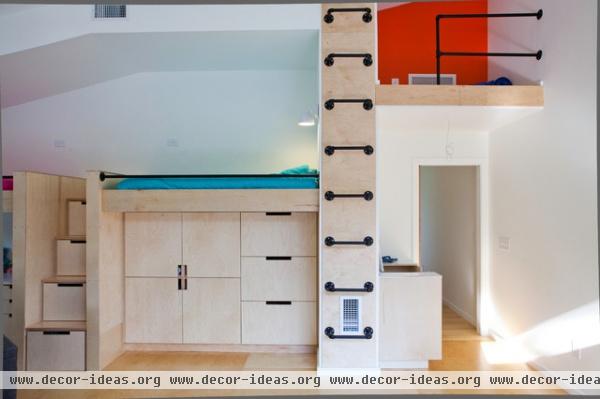
And go high. Another nice tip is to acknowledge that children are active and want to climb. So whether it's a set of steps that provide various platforms to play on or a collection of ladders that lead to important destinations, a kids' room can be filled with ways the children can explore. A ship's ladder to a secret hideaway and a series of steps that find their way to a napping spot are all ways to animate a room.
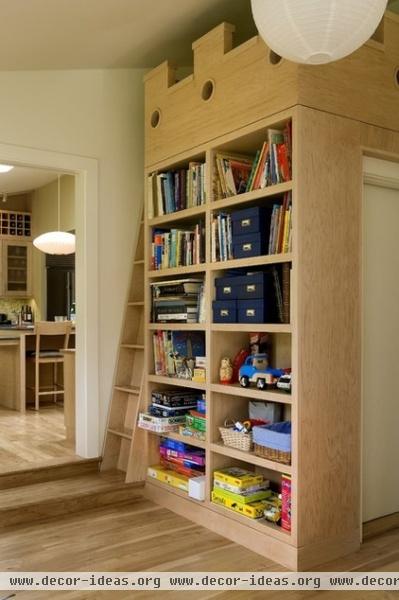
Create a secret place. Like Wright, a good room can encourage our children to explore their creativity. If you have the space, it can be an entire room, but it can also be a corner of a hallway.
Some built-ins can hide a ladder that leads to a fortress tower where someone in distress awaits rescue. Simple, straightforward and filled with possibility. The perfect stage set to grow up in.
Show and tell: We all know that rooms of any size and budget can be full of possibilities for kids' imaginations to run wild. Have a great kid space at home? Please share a photo in the Comments!
Related Articles Recommended












